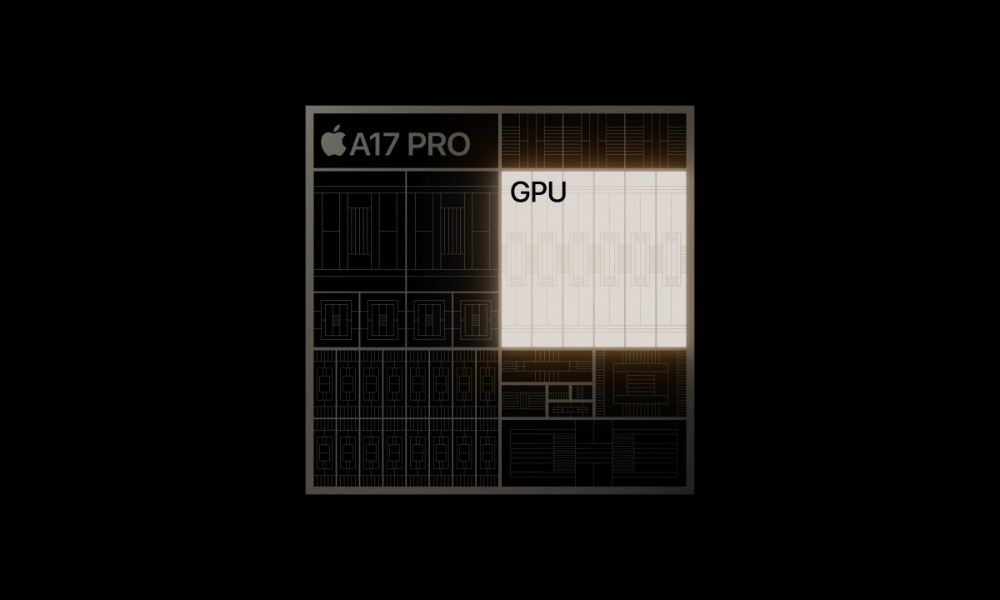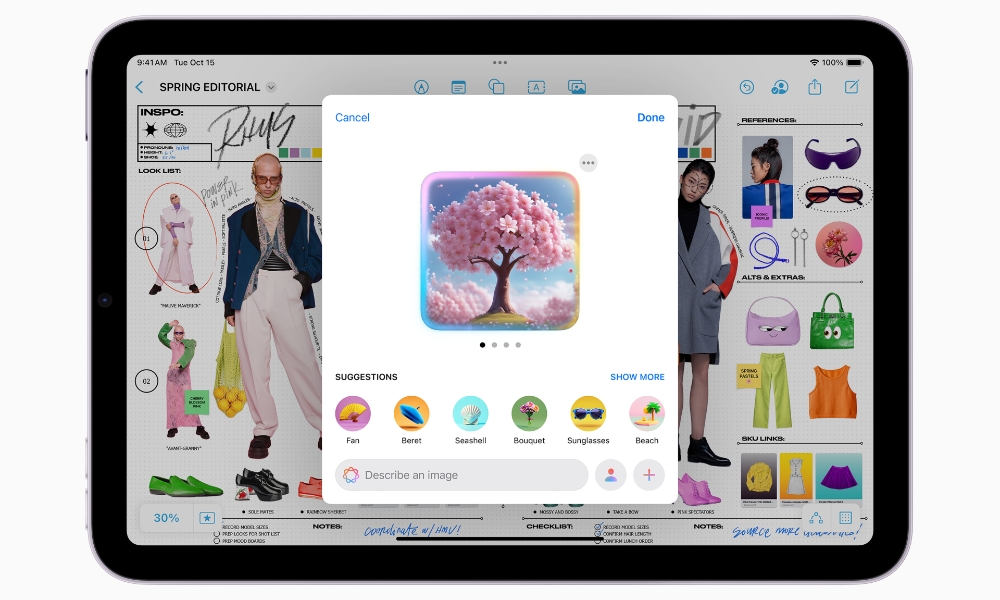The iPad mini’s A17 Pro Chip Isn’t Quite the Same as the One in the iPhone 15 Pro

Toggle Dark Mode
While Apple’s new seventh-generation iPad mini has a more powerful A-series chip than ever, it seems to be a notch behind the silicon used in Apple’s iPhone 15 Pro lineup — despite having the same name.
The new iPad mini and the iPhone 15 Pro (and iPhone 15 Pro Max) both use an A17 Pro chip, but the iPad mini’s version has one less GPU core.
When the A17 Pro debuted in the iPhone 15 Pro lineup last year, it was the first A-series chip to move to a six-core GPU. The A16 Bionic and A15 Bionic chips that preceded it only had a five-core GPU, and the A15 itself was an upgrade from the four-core GPU in the A14 Bionic that was used in the iPhone 12, fourth-generation iPad Air — and is still used in the 2022 10th-generation iPad.

The iPad Air and iPad Pro got healthy GPU upgrades when they moved to Apple’s A-series chips — the iPad Pro in 2021, the iPad Air in early 2022 — but the iPad mini lagged behind on the A15 Bionic. It got the more powerful five-core GPU from the iPhone 13 Pro (the standard iPhone 13 models had a four-core version of the A15). Now, this year’s iPad mini is going in the opposite direction, getting what could be considered an “A17” rather than the A17 Pro we know from the iPhone.
It’s not new for Apple to have variants of their chips with fewer GPU cores. The original $999 M1 MacBook Air had a seven-core GPU compared to the eight cores on the higher-end models, and the A15 Bionic used in the standard iPhone 13 had only four GPU cores rather than the five of the pro models.

This isn’t because Apple has deliberately produced chips with fewer GPU cores but rather the result of chip binning, a process that’s been around for as long as semiconductor companies have been. Apple designs all its chips in a given series with the same number of CPU and GPU cores, but some don’t make the cut. Rather than scrapping those chips that can’t run all the GPU cores, the company disables the faulty core and uses them as a lower-specced version.
The A12X in the 2018 iPad Pro likely suffered the same fate. It had a seven-core GPU, which seemed normal at the time. However, when the 2020 model came along, it featured an A12Z chip that turned out to be identical in every way except for an extra GPU core (while X-suffixed A-series chips were once the norm on iPads, the A12 Z is the only chip that Apple has ever applied a “Z” suffix to). Apple and TSMC presumably improved the fabrication process and created a working 8-core version of the A12X.
The A17 Pro in the iPad mini is almost certainly a binned version of the one used in the iPhone 15 Pro lineup. However, the nature of binning implies that Apple has been collecting quite a few of these over the past year and waiting for an opportunity to use them. If anything, its chip fabrication processes should have improved since the A17 Pro first rolled off the line.
It’s also interesting that Apple no longer has a reason to make standard A17 Pro chips now that the iPhone 15 Pro models have been discontinued. That begs the question of whether it’s fabricating new binned versions of the chip for the iPad mini or if there are so many in reserve from the last year or so of production that it can meet the demand for the new tablet with an existing supply.
The good news is that the missing GPU core likely won’t be a huge problem. While the iPad mini’s A17 Pro has the same number of GPU cores as its predecessor, those cores have been majorly beefed up. Apple created a whole new “breakthrough” GPU in the A17 Pro that it called the biggest redesign in its history. Features like hardware-accelerated ray tracing and Metal effect upscaling deliver the graphics performance necessary to handle AAA console games, and the GPU also calls upon the Neural Engine — which is equally powerful in both flavors of the A17 Pro — to help it produce high-quality graphics.
That means you should have no problem playing games like Assassin’s Creed Mirage and Resident Evil Village on the new iPad mini. The missing GPU core means they may not perform as well as on the iPhone 15 Pro, but we’ll have to wait for some benchmarks and real-world gaming experiences to know how much of a difference that makes in practical terms.
The good news is that the GPU cores are the only difference between the A17 Pro used in the iPad mini and the one in the iPhone 15 Pro. The CPU and Neural Engine core configurations are identical, which means the iPad mini should be able to handle non-graphics processing and Apple Intelligence just as well as an iPhone 15 Pro or iPhone 15 Pro Max.









